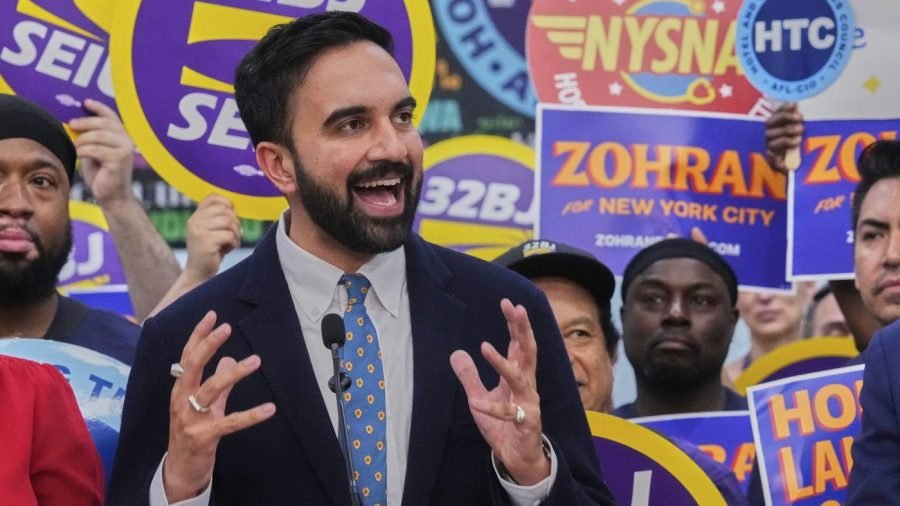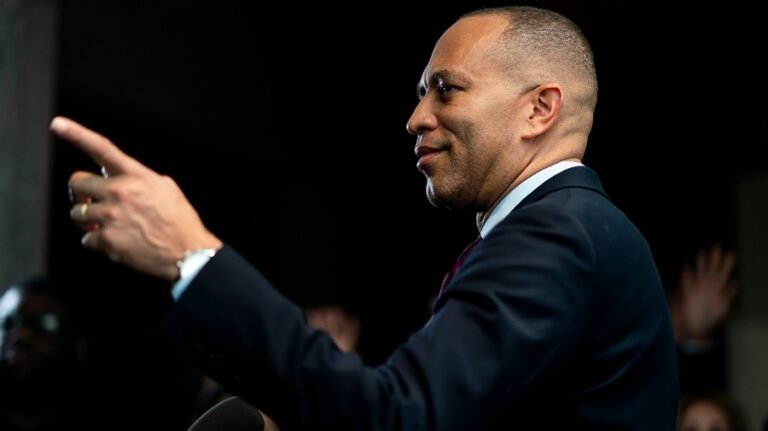
Americans — especially younger Americans of the sort who just elected Zohran Mamdani mayor of New York City — are savvy shoppers. They excel at comparing products online, assessing quality and prices, delivery fees and return policies. Why don’t they turn those same skills to judging political candidates and policies? Isn’t choosing your leaders more important than picking out the perfect sneakers?
It’s not hard. After all, we have real, live and ongoing experiments in governance going on every day across our nation. We can look at how California Gov. Gavin Newsom (D) has driven hundreds of thousands of people to flee his state, for instance, and compare that with how Greg Abbott is attracting more and more people to Texas.
Our brilliant founders set it up that way; states and cities can compete for citizens and businesses by making decisions on taxes, environment, energy, development, law enforcement and a host of other issues that impact their citizens’ quality of life and opportunity to prosper. There are stark differences in approaches to regulating and managing communities — and starkly different outcomes.
Here’s the big picture (spoiler alert): red states are winning and blue states are losing. It’s that simple, but many voters seem unwilling or incapable of figuring it out.
It isn’t a matter of capability. We know, for instance, that in New York the most highly educated voters picked 34-year-old democratic socialist Mamdani, who promised gullible followers free stuff to make life in the Big Apple more affordable. His socialist ideas have never succeeded in the real world, but somehow he conned the most educated among us into believing that this time would be different.
Some 57 percent of college graduates voted for Mandani, compared to 42 percent who have no college degree. Another 57 percent of people with advanced degrees voted for the candidate who advocated policies that have a well-documented history of failure. It’s enough to make you question our education system.
Had they bothered to do some research, those university grads would have discovered that in states like Florida, Republicans like Ron DeSantis have delivered outstanding growth, rising incomes, better education and a host of other benefits. The result has been massive migration to his state. In contrast, we have Democrat-run states like Illinois, which has failed on nearly every front, which lose residents on net to other states.
Why don’t Democrats analyze why their states are losing state-to-state movers while red states are gaining them? After all, more citizens means more congressional seats, more electoral votes and more federal funding. Shouldn’t all states be competing for higher populations? Why are some of them losing?
Democratic officials are so committed to their ideology that they prefer failure to course-correction. As California and New York contemplate the impending loss of even more seats in Congress in 2032, their response is not to make their states more appealing by reducing taxes or easing up on regulations. Instead, they work to attract illegal immigrants in order to swell their populations, knowing that the Census will include them in their count.
There is nothing magical about running a town or state. Asked some years ago why New York was losing residents to Florida, then-Gov. Andrew Cuomo suggested that the weather was responsible. And yes, the Sunshine State does win on that score, but Cuomo’s tin-ear answer ignored the real (and obvious) reason his state was shrinking. The difference in weather is a constant. But New York’s onerous taxes and unacceptably high cost of living keeps getting worse.
For example, Florida imposes zero personal income taxes and only charges businesses a 5.5 percent tax. This helps to keep costs low. When a large business in New York City has to fork over nearly 9 percent of its net income, that extra cost gets passed along to consumers, driving prices higher. Even small businesses are socked with taxes above 6 percent.
Mamdani campaigned on making New York City more affordable, but instead of wanting to reduce that tax burden on firms, he proposes to make it even heavier. Two things will happen: that extra tax will find its way into consumer prices, and businesses will choose to relocate outside the city, which will see shrinking sources of supply, driving costs up even more.
New York State ranks as the fourth-most expensive place to live in the U.S., behind Hawaii, California and Massachusetts. What do those states have in common? They are run by Democrats and are among the most heavily taxed states in the union. It isn’t rocket science.
In blue states, taxes are higher in part because the government spends more money, producing, in many cases, unwieldy deficits. Under DeSantis, Florida has cut its per capita budget, is running a budget surplus and has paid off almost half its debt accrued since statehood. Florida has more residents than New York (23 million versus 20 million as of last year), yet its state budget ($117 billion this year) is somehow less than half that of New York state ($254 billion). In fact, Florida’s entire budget is roughly equal to that of New York City ($116 billion).
But doesn’t that mean Florida is starving its people of critical services, like education? Well, in fact, no. Despite being among the lowest 10 states in terms of education spending per pupil, Florida ranks second nationally in education, according to U.S. News and World Report. New York, on the other hand, spends about two-and-a-half times more more per student than Florida, yet ranks far below it at number 17.
There is an overall pattern here: New York spends much more and delivers much less in public services. Even a college graduate should be able to see that there is something very wrong with that picture.
Liz Peek is a former partner of major bracket Wall Street firm Wertheim and Company.


